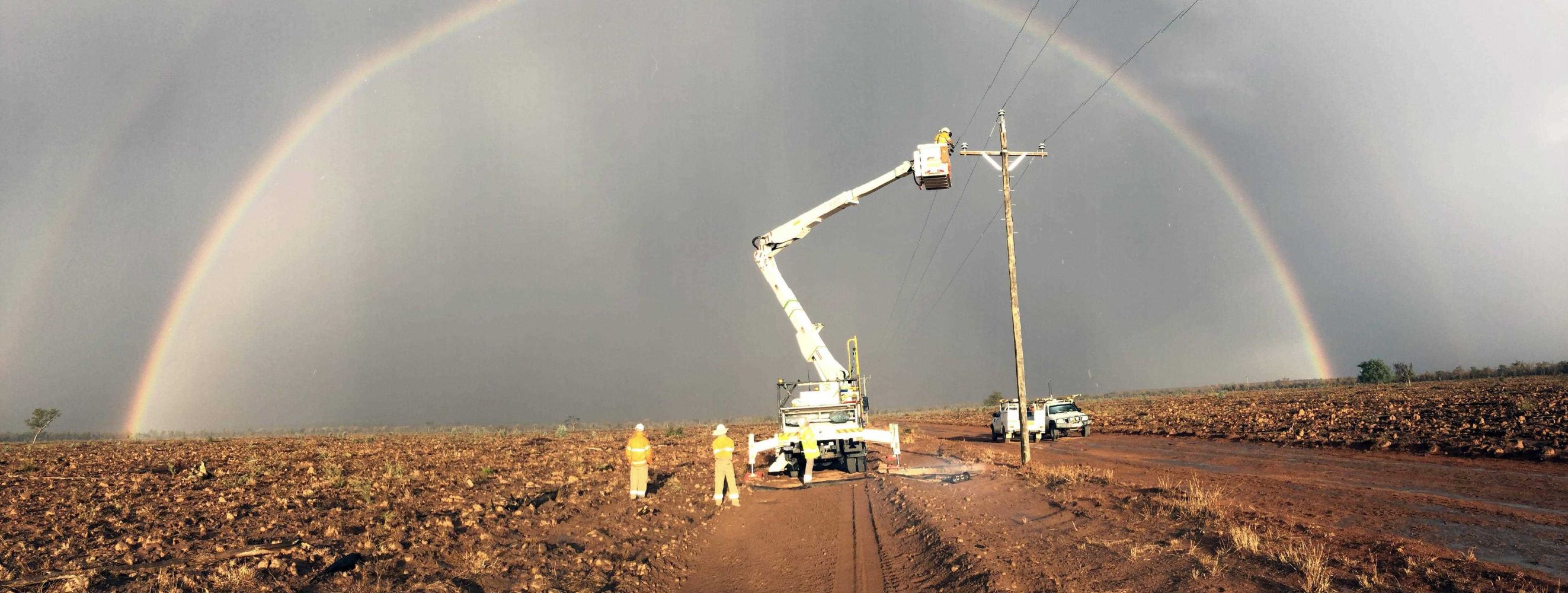How we restore your power
When restoring power, our top priority is the safety of the public as well as our employees working on powerlines.
What to do if your power goes out
If your power goes out, from the safety of your own home or workplace, look out the window or contact neighbours to check if the interruption is affecting only your property or is more widespread.
If you can see or hear something that could help identify the problem, like hanging powerlines or a loud bang, stay well clear and call us immediately on 13 22 96. Precise details will assist our emergency crews to restore power.
Call Triple zero (000) or 13 16 70 if powerlines are down.
Remember, during a storm or cyclone or when the power is out, telephone lines and mobile phone networks may be congested or damaged so please be patient.
Our restoration plan
Our Disaster Management Plan and its supporting regional plans are comprehensive and highly detailed. They direct the activities of hundreds of our employees and spell out clearly the preparations and procedures to be followed, depending on the extent of the damage to the network, when there has been a power outage.
- Our plans emphasise public and employee safety, the protection of our network and the restoration of power supply.
- Damage assessment is conducted once the storm or threat has passed to find out how badly the network has been damaged. This initial assessment helps to estimate the number of field crews and resources needed, and the estimated time to restore power supply.
- Local field crews in the affected area are prepared in advance and are on alert. If necessary, crews from outside the area may be mobilised quickly and brought in to assist with the restoration effort.
Our restoration process
Our restoration focus is on restoring power to public health and community facilities and to the greatest number of customers as quickly as possible.
We repair the vast network of transmission lines, distribution powerlines, substations, neighbourhood transformers, and service wires to customers in order of priority. The typical sequence in the restoration process is as follows. However, many of these activities take place simultaneously.
-
1 Assess our electricity network for damage and make safe
We conduct safety patrols and assess the damage to electricity network. In locations with access issues due to debris and flooding, we may conduct damage assessments by helicopter.
Our field crews respond to reports of fallen powerlines and make the area safe. Fallen powerlines are a deadly hazard so ensuring sites are safe for emergency services and the community is the first priority.
-
2 Repair damage to the electricity network
Protecting and repairing damage to transmission and distribution powerlines is important to ensure power supply is restored to the greatest number of customers as soon as possible.
Our crews are despatched to repair powerlines that connect cities, towns, suburbs and streets. Repairs are also made to distribution substations and transformers.
-
3 Restore power to essential services
These include emergency service and critical community infrastructure such as hospitals, police, ambulance, fire brigade, water treatment facilities, and pumping stations. Efforts to restore power to these facilities are a priority.
-
4 Reconnect individual premises
When electricity network repairs are completed, service lines that connect power to individual homes and businesses are repaired.
After a weather event, repairs may be necessary to the service line that connects power to your property from the electricity network. In some cases we may have disconnected it for safety. If this has happened at your home or business, find out more about the steps to take to have your power reconnected safely without delay.

